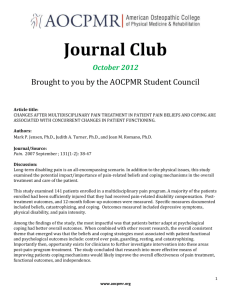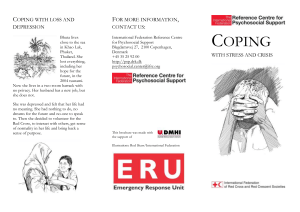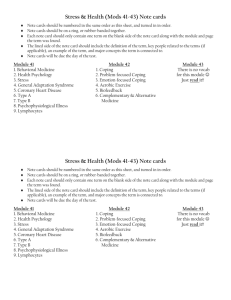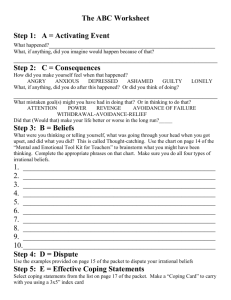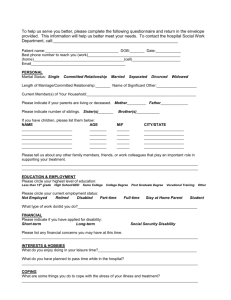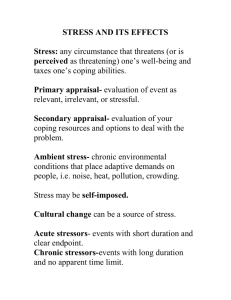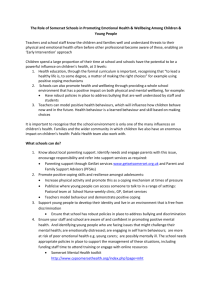Nursing Care Plan for Depression: Assessment & Objectives
advertisement
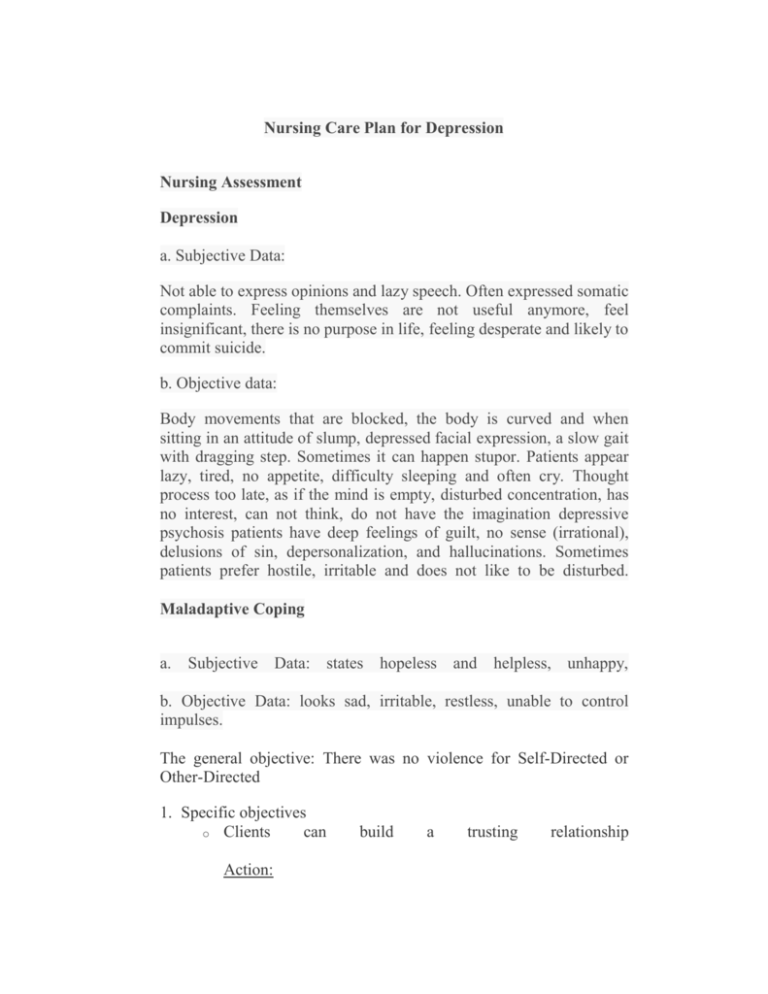
Nursing Care Plan for Depression Nursing Assessment Depression a. Subjective Data: Not able to express opinions and lazy speech. Often expressed somatic complaints. Feeling themselves are not useful anymore, feel insignificant, there is no purpose in life, feeling desperate and likely to commit suicide. b. Objective data: Body movements that are blocked, the body is curved and when sitting in an attitude of slump, depressed facial expression, a slow gait with dragging step. Sometimes it can happen stupor. Patients appear lazy, tired, no appetite, difficulty sleeping and often cry. Thought process too late, as if the mind is empty, disturbed concentration, has no interest, can not think, do not have the imagination depressive psychosis patients have deep feelings of guilt, no sense (irrational), delusions of sin, depersonalization, and hallucinations. Sometimes patients prefer hostile, irritable and does not like to be disturbed. Maladaptive Coping a. Subjective Data: states hopeless and helpless, unhappy, b. Objective Data: looks sad, irritable, restless, unable to control impulses. The general objective: There was no violence for Self-Directed or Other-Directed 1. Specific objectives o Clients can Action: build a trusting relationship Introduce yourself to the patient Do interactions with patients as often as possible with empathy Listen to the notice of the patient with empathy and patient attitude more use non-verbal language. For example: a touch, a nod. Note the patient talks and give a response in accordance with her wishes Speak with a low tone of voice, clear, concise, simple and easy to understand Accept the patient is without comparing with others. Clients can use adaptive coping o Action: Give encouragement to express feelings and say that nurses understand what patients perceived. Ask the patient the usual way to overcome feeling sad / painful Discuss with patients the benefits of commonly used coping Together with patients looking for alternatives, coping. Give encouragement to the patient to choose the most appropriate coping and acceptable Give encouragement to patients to try coping that have been selected Instruct the patient to try other alternatives in solving problems. Clients are protected from violent behavior to self and others. o Action: Monitor carefully the risk of suicide / violence themselves. Keep and store the tools that can be used by patients for violent behavior, self / others, in a safe place and locked. Keep materials that endanger the patient's appliance. Supervise and place the patient in the room that easily monitored by permits / officer. Clients can improve self-esteem o Action: Help to understand that the client can overcome despair. Assess and mobilize internal resources of individuals. Help identify sources of hope (eg, peer relationships, beliefs, things to be resolved). Clients can use the social support o Action: Review and make use of individual external sources (the people closest to, the health care team, support groups, religion). Assess support system beliefs (values, past experiences, religious activities, religious beliefs). Make referrals as indicated (eg, counseling, religious leaders). Clients can use the drug correctly and precisely o Action: Discuss about the drug (name, dosage, frequency, effect and side effects of taking medication). Help using the drug with the principle of 5 correct (right patient, medication, dose, manner, time). Encourage talking about effects and side effects are felt. Give positive reinforcement when using the drug properly.


